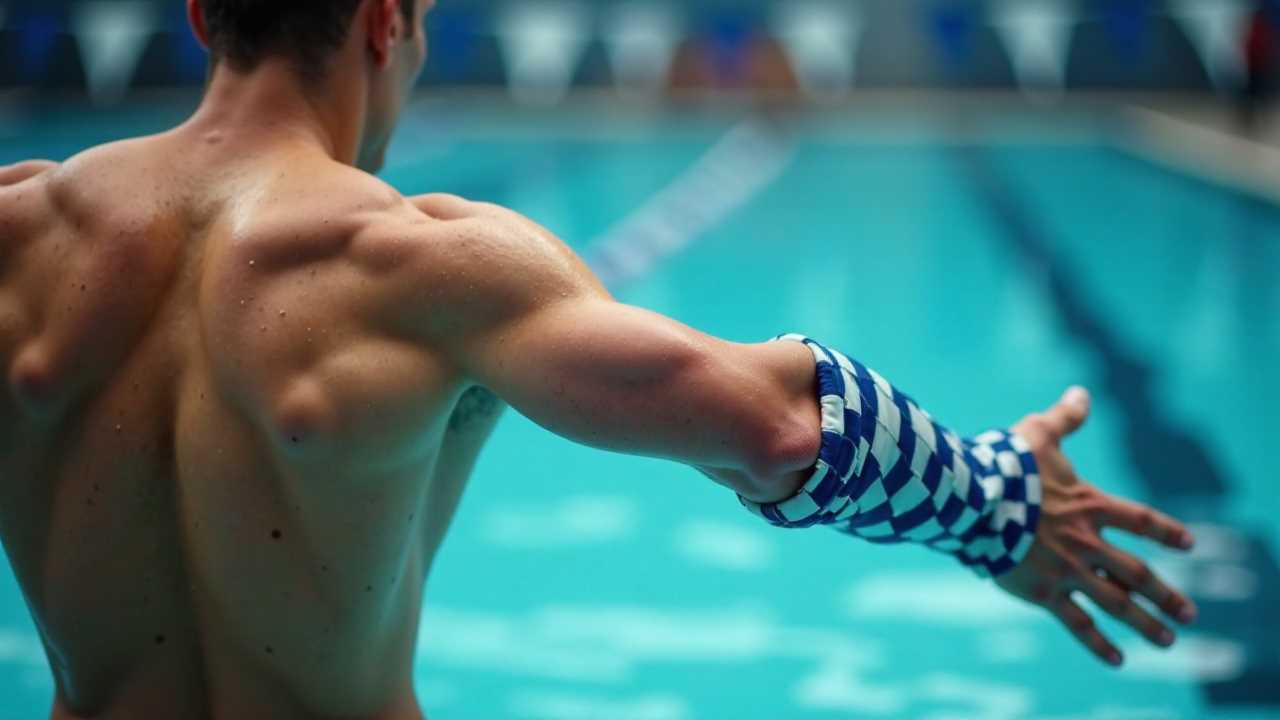
Understanding Swimmer's Shoulder: A Common Challenge
Swimmer's shoulder is a term that encompasses a variety of shoulder injuries commonly experienced by swimmers. This condition often arises from repetitive overhead movements, which can lead to inflammation, pain, and decreased performance. To effectively combat this issue, we must focus on shoulder stability, flexibility training, and a comprehensive understanding of the rotator cuff and biomechanics involved in swimming.
The Role of Shoulder Stability in Injury Prevention
Shoulder stability is paramount for swimmers. The shoulder joint is inherently mobile, which makes it susceptible to injuries if not properly stabilized. A stable shoulder allows for efficient movement patterns, reducing the risk of overuse injuries.
To enhance shoulder stability, we recommend incorporating specific exercises that target the rotator cuff muscles. These muscles play a critical role in maintaining shoulder integrity during swimming strokes. Exercises such as external rotations, internal rotations, and scapular retractions can significantly improve stability.
Additionally, integrating core conditioning into your training routine can further support shoulder stability. A strong core helps maintain proper posture and alignment, which is vital for effective swimming mechanics.
Flexibility Training: A Key Component
Flexibility training is another essential aspect of preventing swimmer's shoulder. Tight muscles can restrict movement and lead to compensatory patterns that increase the risk of injury.
Incorporating a well-rounded flexibility routine can help maintain optimal range of motion in the shoulders and surrounding muscles. Focus on stretching the pectoral muscles, latissimus dorsi, and the rotator cuff. Dynamic stretches before workouts and static stretches post-training can be particularly beneficial.
A great way to enhance flexibility is through yoga or Pilates, which emphasize controlled movements and stretching. These practices can improve overall body awareness and help swimmers develop better movement patterns.
Biomechanics: Understanding Movement Patterns
Understanding the biomechanics of swimming is crucial for preventing injuries. Each stroke involves complex movements that require coordination between various muscle groups.
Proper technique is vital for minimizing stress on the shoulder joint. Swimmers should focus on maintaining a neutral spine and engaging the core during strokes. This alignment helps distribute forces evenly across the body, reducing the strain on the shoulders.
Video analysis can be an effective tool for assessing stroke mechanics. By reviewing footage, swimmers can identify areas for improvement and make necessary adjustments to their technique.
Warm-Up Routines: Preparing the Body
A well-structured warm-up routine is essential for preparing the body for the demands of swimming. A proper warm-up increases blood flow to the muscles, enhances flexibility, and primes the nervous system for optimal performance.
Start with general cardiovascular activities, such as light jogging or jumping jacks, to elevate the heart rate. Follow this with dynamic stretches that focus on the shoulders, such as arm circles, shoulder rolls, and torso twists.
Incorporating sport-specific movements into the warm-up can also be beneficial. For example, performing a few slow, controlled strokes in the water can help activate the muscles used during swimming.
Conditioning: Building Strength and Endurance
Conditioning is a vital component of swimmer's shoulder prevention. A well-rounded conditioning program should focus on building strength, endurance, and flexibility in both the upper body and core.
Resistance training can be particularly effective for swimmers. Exercises such as pull-ups, push-ups, and resistance band workouts can strengthen the muscles surrounding the shoulder joint. It is important to balance pushing and pulling movements to ensure muscular symmetry and prevent imbalances.
Endurance training, such as swimming longer distances at a moderate pace, can also help improve overall shoulder resilience. This type of training conditions the muscles to withstand repetitive stress, reducing the likelihood of injury.
Recovery: The Importance of Rest and Rehabilitation
Recovery is often overlooked but is crucial for preventing swimmer's shoulder. Adequate rest allows the body to repair and strengthen itself after training sessions.
Incorporating active recovery days, where swimmers engage in low-impact activities like cycling or swimming at a leisurely pace, can promote blood flow and aid in recovery.
If pain or discomfort arises, it is essential to address it promptly. Seeking professional guidance from a physical therapist or sports medicine specialist can provide tailored rehabilitation strategies to address specific issues.
A Holistic Approach to Swimmer's Shoulder Prevention
Preventing swimmer's shoulder requires a multifaceted approach that encompasses shoulder stability, flexibility training, biomechanics, conditioning, warm-up routines, and recovery. By focusing on these key areas, swimmers can significantly reduce their risk of injury and enhance their overall performance.
Implementing these strategies into your training regimen will not only help you master swimmer's shoulder prevention but also contribute to a more enjoyable and successful swimming experience. Prioritizing your shoulder health is an investment in your athletic future, allowing you to swim longer and stronger while minimizing the risk of injury.
 Mobility trainingHome Fitness RecoverySports Injury PreventionPersonal Physical TherapyOrthopedic SolutionsPrivacy PolicyTerms And Conditions
Mobility trainingHome Fitness RecoverySports Injury PreventionPersonal Physical TherapyOrthopedic SolutionsPrivacy PolicyTerms And Conditions
